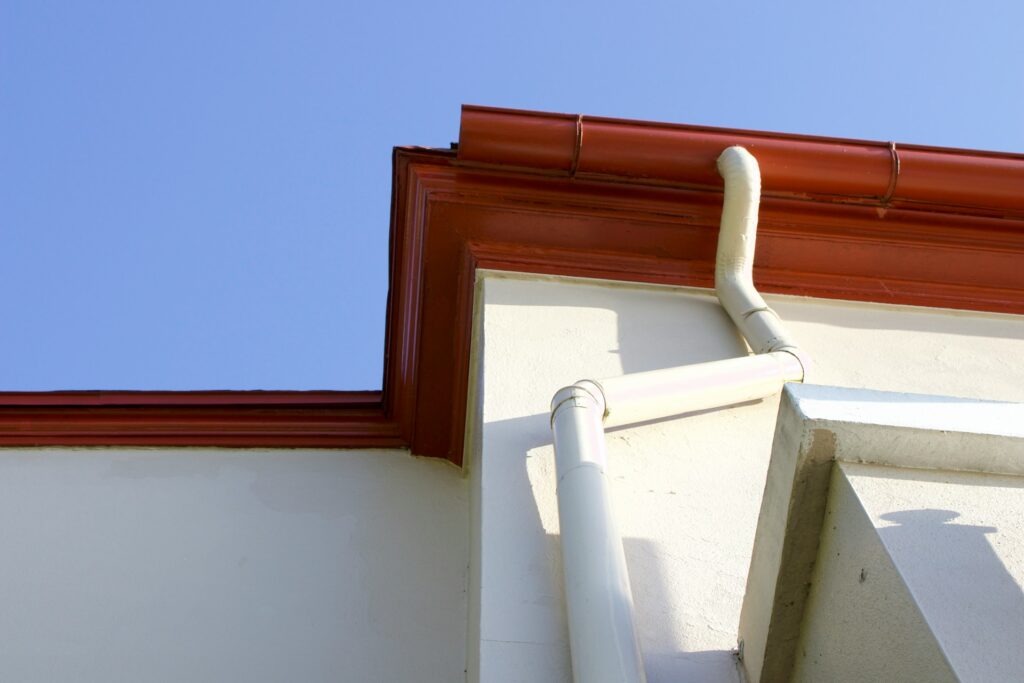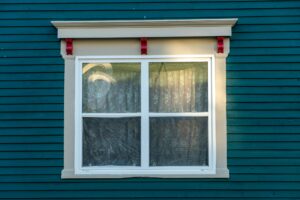Gutter guards can feel like a mystery for many homeowners. Some swear by them for saving time and money, while others remain unconvinced. Evaluating cost versus benefit is more than just basic math. It draws on how guards prevent future damage, reduce hazards, and fit with your home environment.
Below, you’ll find a comprehensive guide to gutter guard pricing, performance, and overall practicality. You’ll gain clarity on whether this investment aligns with your needs and avoids unnecessary spending. Ultimately, you will be able to make a confident decision that suits both your budget and home’s unique needs.
Why Gutter Guards Matter
Gutters protect your home from water damage by channeling rainwater away from your roof and foundation. If leaves, debris, or other blockages accumulate, gutters can overflow and direct water into walls, basements, or crawl spaces. Over time, this water infiltration leads to mold growth, compromised structural beams, or stained siding.
Gutter guards act like a filter or barrier, preventing most debris from ever entering the gutter channel. They can drastically reduce the time you spend cleaning and the risk of water damage. But in exchange for these conveniences, gutter guards carry an upfront cost and require careful consideration.
There’s no one-size-fits-all approach here. Factors such as roof slope, local weather patterns, and the number of nearby trees factor significantly into how well gutter guards will perform.
Price Factors that Influence Gutter Guard Costs
Short paragraphs, 2-3 sentences:
- Gutter guard prices vary widely, ranging from about $1 to $15 per linear foot installed. The type of guard you choose, the complexity of your roof, and even labor rates in your region can alter these figures. As a ballpark estimate, a typical 2,000-square-foot home may need anywhere from $800 to $3,000 total for all materials and installation.
- Cheaper options often come in DIY-friendly forms like plastic or lightweight mesh. Premium models typically use more durable metals like aluminum or stainless steel, feature fine micro-mesh technology, and require professional installation. These higher-end materials cost more upfront yet can maintain their effectiveness without frequent replacement.
- Installation difficulty also matters. If you have extensive rooflines, multiple stories, or unique architectural features, labor fees may rise. A steeper pitch increases complexity, which can further drive up the total cost.
Types of Gutter Guards
While prices are an important first step, it also matters to understand how different gutter guards perform. Each style has unique benefits and limitations that can influence your long-term satisfaction.
Mesh or Screen Gutter Guards
- These guards fit over the top of the gutter, using a mesh or screen that filters out larger debris like leaves and twigs.
- They are relatively affordable, typically costing around $1 to $5 per linear foot for materials alone.
- Mesh guards can be easier to install, but finer particles may still enter over time, causing occasional buildup.
Reverse Curve or Surface Tension Guards
- These guards feature a curved hood that allows water to adhere to the surface and flow into the gutter through a small slit, while debris slides off.
- Price points are higher, averaging $3 to $10 per linear foot, partly due to more complex materials and proper installation requirements.
- They can work well in areas prone to heavy leaf fall. However, they may struggle with particularly sticky debris, such as pine needles.
Micro-Mesh Guards
- Micro-mesh guards use an ultra-fine stainless steel or aluminum mesh that filters out almost everything, including small particles and shingle granules.
- Costs can run $5 to $15 per linear foot, reflecting the higher-quality materials and more intricate design.
- Due to their fine mesh, they are among the most effective at keeping gutters debris-free year-round.
Foam Inserts
- Foam gutter guards are porous inserts that fit inside the gutter, allowing water to pass while blocking large debris.
- They are budget-friendly, often under $3 per linear foot.
- However, foam can degrade or become a host for mold if not maintained properly, potentially leading to a shorter lifespan and higher replacement costs.
Weighing Performance versus Price
Your decision goes beyond the initial cost. Integrate performance and durability into the equation to find a solution that fits your long-term needs. Gutter guard materials vary in:
- Longevity: Durable metals or robust designs often last 10 to 20 years, while cheaper plastics might fade or crack within 5 to 7 years.
- Maintenance needs: Even the best guards require some upkeep, especially if your home is in a heavily wooded area.
- Debris size: If you primarily deal with large leaves, simpler guards might suffice. For pine needles or smaller debris, a micro-mesh design may save you from frequent gutter cleanings.
Many homeowners find mid-range micro-mesh or higher-quality screen guards a decent balance between cost and performance. The initial savings from cheaper materials can evaporate when you factor in more frequent cleanings or replacements.
Calculating Budget beyond Installation
Cleaning and Maintenance
With gutter guards installed, does cleaning go away entirely? Not necessarily. While guards reduce the number of clogs, small debris can still slip through, and certain guards (e.g., foam) degrade over time.
- Budget for at least an annual inspection. Quickly flush or remove any minimal debris found on top or beneath the guard.
- If you live in an area with abundant pines or oaks, consider two inspections per year—once in early spring and again in late fall.
Repairs and Replacement
Good guards should last around 10 to 20 years, but variables like harsh climates or installation errors can reduce that lifespan. Check your warranties. Many reliable brands back their products for 10 years or more.
- Replacement costs can be substantial if you choose a premium system.
- Some products offer transferable warranties, which can add value to your home down the road.
Potential Water Damage
A worn or low-quality guard can misdirect water or allow debris buildup. Either situation could lead to trapped moisture and compromised roofing elements. When you invest in gutter guards, aim for a reliable product to avoid expensive home repairs.
DIY or Professional Installation
One of the biggest price variables is labor. Installing gutter guards yourself can save hundreds or thousands of dollars, but it requires careful attention to detail.
- Simple mesh screens or foam inserts might be a weekend project for skilled individuals comfortable with ladders.
- More advanced systems often require specialized tools or professional installation to ensure proper fit and performance.
- If your home has multiple stories or a steep roof, professional installation could be safer and more reliable.
Weigh the risk of mistakes and potential injuries against the savings. Installing a premium guard system incorrectly can nullify the performance benefits and even void the product’s warranty.
Cost versus Long-Term Savings
It’s easy to focus on the initial price tag, but consider how guards help keep your overall home maintenance costs in check. Over time, well-chosen guards can reduce:
- Professional gutter cleaning bills. Depending on your home size and region, cleaning can cost $150 or more each time.
- Water damage repairs. Insurance might cover certain types of flooding, but any out-of-pocket repair can quickly surpass the cost of installing guards.
- Foundation woes. Repeated exposed runoff can erode soil around the foundation, leading to costly structural fixes.
By minimizing these risks, gutter guards can pay for themselves, especially if you plan on staying in your home for many years. This is where the long-lasting quality of more reliable systems can shine.
Pros and Cons at a Glance
To simplify your decision, here’s a snapshot of key advantages and drawbacks associated with gutter guards:
Pros
- Reduced gutter cleaning frequency: Guards block the bulk of debris, saving labor and time.
- Lower risk of clogs: Faulty gutters are a major cause of water damage, and guards help reduce the likelihood of buildup.
- Long-term property protection: Preventing water intrusion can protect siding, trim, and your home’s foundation.
Cons
- Initial cost: Even budget options add a layer of expense. Premium systems can go well beyond initial estimates once labor is included.
- Maintenance remains: Although guards lessen the chore, some gutter cleaning or inspection is still part of home maintenance.
- Potential issues with poor installation: Misaligned or low-quality guards may not perform as intended, leading to hidden costs down the road.
Real-World Example
Imagine you live in a tree-lined neighborhood with mature oaks dropping leaves every autumn. Despite cleaning your gutters each spring and fall, the downspouts still clog once or twice a year, forcing water to pool at the edges of your roofline.
- You decide to install a mid-level micro-mesh guard system, costing about $7 per linear foot on average. With 150 linear feet of gutters, materials run around $1,050.
- A professional charges $600 to install them, bringing your total to $1,650. You anticipate not having to pay professionals for biannual cleanings, which have been costing $300 per year.
- In a little over five years, your guards effectively “pay for themselves,” given lower cleaning costs and fewer issues with water overflow. Plus, you’ve minimized the stress of emergency repairs after storms.
This scenario illustrates why many homeowners embrace gutter guards as a valuable long-term investment rather than a surface-level expense.
Practical Tips before Making Your Purchase
As you evaluate different systems, keep these points in mind:
- Inspect your gutters beforehand. Confirm they’re in decent condition. Fix leaks, warping, or sagging before installing guards, or you risk compounding issues.
- Seek multiple estimates. The cost of materials and labor can vary widely, so getting multiple quotes helps you compare apples to apples.
- Check warranties. A trustworthy installer should offer a written labor warranty, and the guard manufacturer should likewise provide coverage on product defects.
- Read reviews or testimonials. Online resources, home improvement forums, and neighbors’ experiences can give insight into real-world performance.
- Keep your environment in mind. If you only have a few shrubs and occasional leaves, you might not need premium micro-mesh. If you live in a heavily wooded area, investing more upfront could save in the long haul.
For a deeper dive into matching guard type to your roof design and comparing brand reviews, you can explore resources like “Homeowner’s Guide to Gutter Guards” at trusted consumer reports or home improvement sites. You might also review local contractor listings on sites like Angie’s List or HomeAdvisor to read feedback from homeowners in similar climates.
Are Gutter Guards Worth It?
Ultimately, gutter guards serve as a strategic preventive measure. They’re worth it if you value less frequent gutter cleanings, a reduced risk of clogs, and an added layer of home protection from water damage. But you should weigh the upfront expense carefully in relation to the challenges posed by your local environment.
Some see gutter guards as a necessity in climates with abundant foliage or heavy storms. Others with fewer trees or smaller homes might find traditional gutter maintenance sufficient. If you’re content spending a few hours each season on basic cleaning, the cost of guards may not make as much sense. Yet for homeowners who are older, busy, or uncomfortable on ladders, installing gutter guards may be a convenient and cost-effective long-term solution.
Moving Forward with Confidence
Gutter guards typify an investment that yields dividends in peace of mind and potentially in resale value, should you decide to sell. By balancing up-front costs, durability, and your home’s unique conditions, you’ll choose a guard system that delivers ongoing benefits.
Envision a future where gutters quietly channel rainwater away, free of stubborn clogs or the hassle of frequent cleanings. By understanding your options, checking reliable installation methods, and matching them to your home, you unlock a more stress-free, protective environment for years to come.
If you’re ready to make the leap, start by comparing quotes and reviewing different guard designs. Look for materials suited to your area’s weather patterns and known debris concerns. Whether you DIY or hire a professional, the right gutter guard investment can be a lasting improvement to your home’s overall health.
Conclusion
Gutter guards can be a smart, long-term choice, saving you time and safeguarding against expensive water damage. Yet the price tag, performance, and overall practicality hinge on factors like home architecture, climate, and the quality of the guard system you select.
By weighing the benefits—reduced upkeep, structural protection, and peace of mind—against initial and ongoing costs, you can decide if gutter guards deserve a place in your home. With carefully chosen materials and proper installation, they often deliver excellent value, freeing you to enjoy a cleaner, safer home without the constant worry of clogged gutters.




